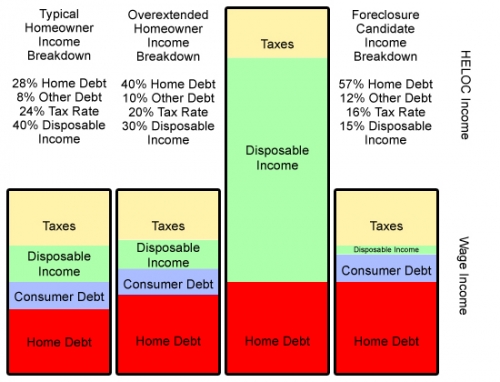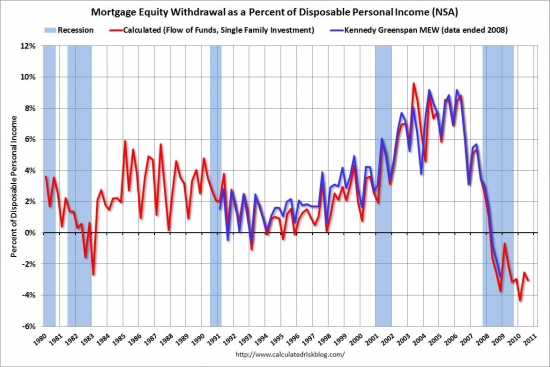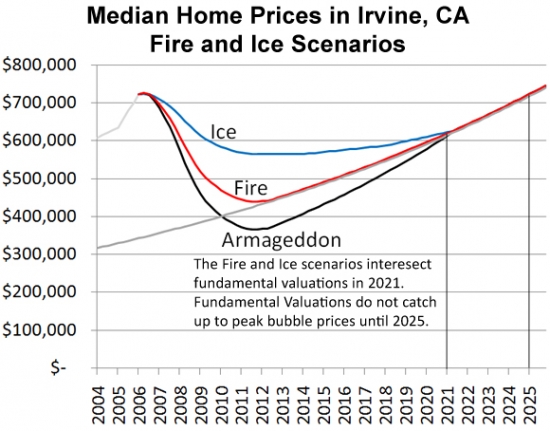It's always darkest before the dawn. New home sales fall to new lows an astonishing 80% off the peak.
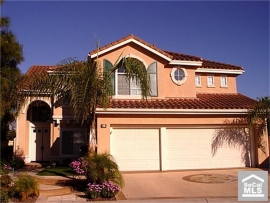
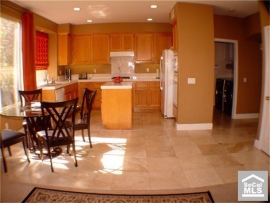
Irvine Home Address … 12 PIENZA Irvine, CA 92606
Resale Home Price …… $1,133,800

We can stay out all day or we can run around all night
Well all night, all night
Well it's time to go home
And I ain't even done with the night
John Mellencamp — Ain't Even Done With The Night
How bad will it get for the real estate industry? We found out last week that the NAr are liars… oh, wait… we already knew that… and our dismal resale home sales figures are even worse than we knew. Plus, with the lower sales prices, real estate commissions are lower on lower volume. The combination makes for hungry realtors, mortgage brokers, appraisers, inspectors, and other related fields.
It's even worse for the new home industries. There are many consultants who make a living providing services to real estate developers and home builders. When homebuilding is off, a major component of our economy sits idle, and its workers are not buying homes. Many are squatting in houses they bought back when they had work in 2006.
I told people last year that I believed the 3rd quarter of 2010 was the bottom of homebuilder activity. I thought the homebuilder stocks were finally ready to rally on a sustained basis. I thought the dawn was finally breaking from homebuilding's long dark night. I was wrong. I know there is a seasonal component to new home sales numbers, December is always a difficult month to open escrow but there is a huge push to close escrows in process. The result is a beefy December and a thin January for homebuilders every year. That being said. These numbers are horrendous.
Sales of new homes fall a shocking 11.2%
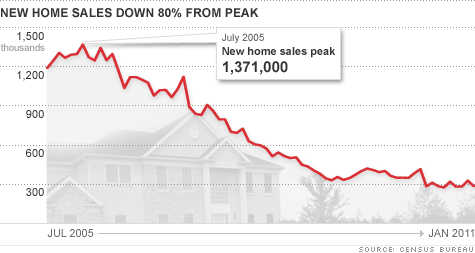
February 24, 2011: 1:02 PM ET
NEW YORK (CNNMoney) — The new year has brought little cheer to new-home builders: Their sales fell a shocking 11.2% between December and January and 18.6% from 12 months earlier.
The total number of new homes sold in January was a seasonally adjusted 284,000, down from 325,000 in December, the government said Thursday.
I reported last week that Irvine Company opens two new developments with 2,600 houses. Since they are the near monopolistic leader of the Orange County oligopoly on residential real estate, they operate differently than the opportunistic builders.
When prices started weakening in early 2007 and the volume dried up, the Irvine Company refused to lower its land sales price, so construction stopped. Very few homes were built in 2007 or 2008, and there were no regular production runs. So while homebuilders in the rest of the country continued to build, albeit fewer and fewer homes, the Irvine Company and its associated builders on the Ranch simply stopped.
So now while the builders are hitting bottom in sales volumes around the country, the Irvine Company has some unmet demand for new homes which it is now gearing up to meet. To continue to function as a price-leader, it must continue to maintain a scarcity of product. When there was little demand, no supply was offered. Now that there is a little demand, the Irvine Company will deliver enough product to meet some of this demand while trying to maintain their price points. Like every other builder, they are hoping lenders can resolve their shadow inventory problem without upsetting the supply shortage that keeps prices above a natural equilibrium.
In total, the market is down 80% from its peak, which was set in July 2005, when the annualized rate of sales hit nearly 1.4 million.
The big problem facing developers is that they face significant competition from foreclosed homes, which sell at bargain-basement prices. In fact, 26% of all homes sold last year were foreclosures.
Resale of distressed inventory caused prices to go down. How fast prices go down depends on the rate at which product is released to the market.
Let me give you a real-life example:

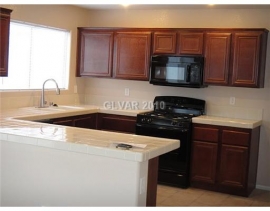
4229 ROBINS RIDGE DR, LAS VEGAS, 89129
11/12/10 Purchase Date![]()
3/11/11 Sale Date
$172,000 Proforma Sale Price
$158,000 Actual Sale Price
-$10,664 Cost of Sales and Incentives
==================================
$147,336 Total Revenue from sale
Acquisition, Carrying, and Renovation Costs
———————————————————–
$127,000 Auction Acquisition Cost
+$12,276 Preparation for sale
==================================
$144,276 Total Acquisition and Renovation Costs
Total Profit $3,060
Profit Margin 2.1%
Comparable Sales
——————————————————————————
2003, 3/2, 2030 SF, $190000, $93.54/SF, SMOKEMONT CT, $188,000
2002, 4/3, 2024 SF, $154400, $76.24/SF, CANYON CLIFF CT, $160,000
2003, 4/3, 2024 SF, $170000, $83.95/SF, COOK BLUFF AV, $170,000
2003, 3/2, 2030 SF, $189500, $93.3/SF, HOLLOWAY HEIGHTS AV, $185,000
Comparable Rentals
——————————————————————————
10452 CANYON CLIFF CT — 3 bed 3 bath 2492 SF — 2002 List: $1,345
10456 CANYON CLIFF CT — 3 bed 3 bath 2024 SF — 2002 List: $1,350
4209 ROBINS RIDGE DR — 3 bed 2 bath 1396 SF — 2002 List: $1,200
4209 ROBINS RIDGE DR — 3 bed 2 bath 1396 SF — 2002 List: $1,200
When I purchased this property, I thought I would get $172,000 based on the comparable sales (two of the four are model matches). My property required extensive renovation, so I didn't get on the market until early January. 
On January 11, 2011, one of my competitors buys 10428 DENALI RIDGE Ct Las Vegas, NV 89129 at auction for $125,500. It is also a model match to mine. His business model is different than mine. Rather than fix it up, he did nothing to the property and merely put in on the market for a below-market price to make a quick sale — and steal my buyer.
A few weeks ago, we are approached by a buyer's agent who told us that his clients had visited both properties, and they like ours much better, but since I was at $164,900 and my competitor with a model match a couple of blocks away is asking only $159,900, they offered me $155,000.
Ordinarily, I would have countered back at like $162,500 or something like that, but I took the buyer's agents gambit seriously. His clients really could go buy the other property, and with the savings, they could probably fix it up themselves (not that they would bother). Since my competitor is in a low price and has no renovation costs, he has room to cut price aggressively if he wishes. Plus, if I lose this buyer, how long will I have to wait for the next one?
From the perspective of a flipper in 2011, my Las Vegas inventory is not fine wine. It does not get more valuable as it ages. I countered back at $158,000, and I was happy to make the deal. Not all of them are home runs.
The reason prices are going down in Las Vegas or any market where there is an excess of inventory is due to the behavior of me and my competitors as we each implement different business strategies and react to each other. One thing we all have in common is that we cannot afford to hold our inventory. If buyers are not available at prices set by previous comps, then prices are going down until a buyer is found. The higher price points hold the carcasses of flippers who held out for a better price during the decline.
“Housing is a price-driven market,” said real estate analyst Michael Larson of Weiss Research Investors. “Ordinary home buyers can and will buy houses, but only if the price is right. That makes life tough for new home builders, who have to compete with distressed properties and 'nearly new' foreclosures.”
The release followed Wednesday's more positive industry report showing that sales of previously owned homes had inched up slightly during January. A bulk of those sales came from bank repossessions and other distressed properties.
But there is always a market a for new homes because many people prefer a a house that nobody else has used, according to Jeff Mezger, CEO of KB Homes. Plus, foreclosures are often sold “as is” and are in poor condition.
Foreclosures often are in bad condition because it sometimes doesn't make sense financially to fix them up, particularly in a declining market. Many of my competitors do little or nothing to fix up houses relying totally on speed-to-market to make a profit. 
“One of our biggest market segments is single moms, who don't want to have to fix up things,” he said. “They look at used homes first. “They look at foreclosures and don't like what they see.”
That is also one of the reason I prefer to renovate the properties and at least bring them up to the standard of the neighborhood.
Some progress has been made by home builders in reducing their inventories of unsold homes, according to Brad Hunter, chief economist with Metrostudy, a real estate information provider.
In Atlanta, builders reduced the glut by 35% during 2010. In Tampa, inventory fell more than 17%; in Phoenix, it's down more than 10%.
That absorption may be slow by historical standards, but it does indicate a trending in the right direction.
By the end of January, there were an estimated 188,000 new homes still on the market, the lowest inventory level since December 1967. It's a 7.9 month supply at the current rate of sales, down 1.2 months since last January.
The median price of home sold during the month was $230,600, a 13.3% increase compared to a year earlier.
“If you're looking for signs of a robust recovery in housing,” said Larson, “you're just not going to find it anytime soon. Instead, sales, pricing, and construction activity are likely to bounce along the bottom for several quarters.”
One of the things that shocked me in Las Vegas was the resiliency of the homebuilding industry. Homebuilders can adjust to any stable price point where the final sales price of the product is greater than the cost of the inputs. The cost of the sticks and bricks to make a home is less than $60/SF for production builders in many markets, so as long as prices stay somewhat above that, they can build and sell profitably. .jpg)
I was pulling comps on a property that was a 2007 auction candidate in a neighborhood where the builder restarted construction in 2010. When I pulled model-match comps, I found 7 properties: four of them were priced between $140,000 and $150,000, and three of them were priced between $180,000 and $190,000. When I looked more carefully, I could see the dates of construction are what separated the two groups. The REOs only three or four years older where selling at a 20% discount.
When house prices are in a decline, they take on the characteristics of used cars with a steep drop when it goes on the lot (or is that when it drives off the lot?). The discount for the REO was remarkable, yet homebuilders are building and selling homes. Why is that?
There is always a premium for new. Why do people pay an extra 20% for a car. Surely it isn't for the joy of losing that money as they leave the sales lot. In Las Vegas, new is very affordable. They can buy new houses at or below rental parity. Of course, they can buy REO at a steep discount to rental parity, but for a family wanting a house as an owner-occupant, the extra cost doesn't seem that large when they are still saving on a comparable rental.
Of course, like in other markets, homebuilders in Las Vegas are facing the release of inventory to the MLS and jokers like me competing with other flippers to drive prices down.
How many times will builders face the same dilemma I faced: make me a deal or I will buy a model-match from the flipper down the street? Until shadow inventory is fully processed, homebuilders will not be raising prices or output significantly. Competition from REO won't allow them to.
Take the loan mod money and run
This owner may have received principal reduction from B of A.
- Today's featured property was purchased on 6/16/2007 for $1,080,000. The owner used a $990,000 first mortgage and a $90,000 down payment.
- On 3/11/2008 he refinanced with a $920,000 first mortgage and a $74,500 second mortgage.
- On 12/28/2010 he refinances with a $729,750 first mortgage — no longer jumbo on B of A's books, so it's no longer a risk to B of A.
Did this borrower come up with a quarter million dollars cash to pay down the loan? Perhaps the second hasn't shown up yet, but there is a chance that B of A wrote off the difference in a loan modification. If so, this peak buyer just received a huge windfall from B of A, and he has put the house for sale to cash in his chips.
Update: an astute observer who knows the owners has stated this was indeed a cash-in refinancing. Far less interesting than getting away with loan mod booty, so apparently there is nothing to see here. Move along.


Irvine Home Address … 12 PIENZA Irvine, CA 92606 ![]()
Resale Home Price … $1,133,800
Home Purchase Price … $1,080,000
Home Purchase Date …. 6/16/2007
Net Gain (Loss) ………. $(14,228)
Percent Change ………. -1.3%
Annual Appreciation … 1.3%
Cost of Ownership
————————————————-
$1,133,800 ………. Asking Price
$226,760 ………. 20% Down Conventional
5.02% …………… Mortgage Interest Rate
$907,040 ………. 30-Year Mortgage
$235,299 ………. Income Requirement
$4,880 ………. Monthly Mortgage Payment
$983 ………. Property Tax
$0 ………. Special Taxes and Levies (Mello Roos)
$189 ………. Homeowners Insurance
$47 ………. Homeowners Association Fees
============================================
$6,099 ………. Monthly Cash Outlays
-$1338 ………. Tax Savings (% of Interest and Property Tax)
-$1086 ………. Equity Hidden in Payment
$443 ………. Lost Income to Down Payment (net of taxes)
$142 ………. Maintenance and Replacement Reserves
============================================
$4,261 ………. Monthly Cost of Ownership
Cash Acquisition Demands
——————————————————————————
$11,338 ………. Furnishing and Move In @1%
$11,338 ………. Closing Costs @1%
$9,070 ………… Interest Points @1% of Loan
$226,760 ………. Down Payment
============================================
$258,506 ………. Total Cash Costs
$65,300 ………… Emergency Cash Reserves
============================================
$323,806 ………. Total Savings Needed 
Property Details for 12 PIENZA Irvine, CA 92606
——————————————————————————
Beds: 5
Baths: 3
Sq. Ft.: 2450
$463/SF
Lot Size: 6,496 Sq. Ft.
Property Type: Residential, Single Family
Style: Two Level, Mediterranean
Year Built: 1997
Community: Westpark
County: Orange
MLS#: S648865
Source: SoCalMLS
Status: ActiveThis listing is for sale and the sellers are accepting offers.
On Redfin: 5 days
—————————————————————————— 
Private end of cul-de-sac location. Upgraded French doors leading to a large, magnificent residential resort style backyard with pebble tech pool, beach access, waterfall, spa, fire pit, built-in BBQ with refrigerator, elegant palms and more. This home has five bedrooms with ONE BEDROOM AND BATH DOWNSTAIRS. Upgraded Travertine floors, upgraded custom baseboards, crown mouldings and upgraded carpet. Home is open, light and bright with soaring ceilings and elegant high arched windows, custom paint, recessed lighting, built-in alarm system, 3-CAR GARAGE and more. Additional association amenities include parks, pool/spa and tennis. Close to shopping, entertainment and great schools, including Plaza Vista Elementary, UCI and much more.


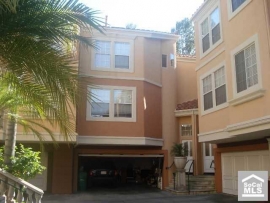
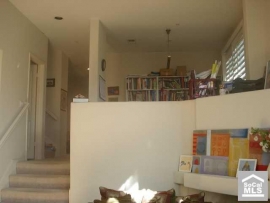








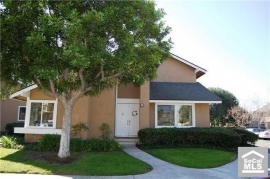








 Baths: 3
Baths: 3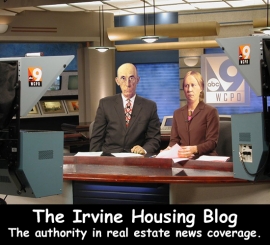
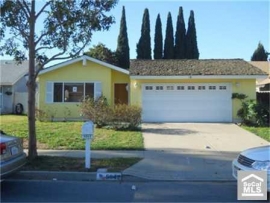
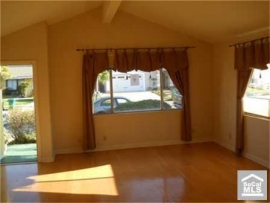


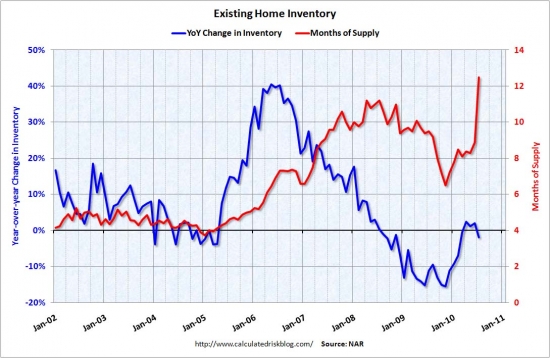






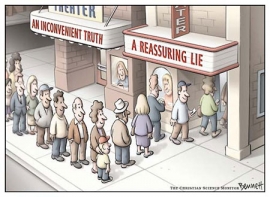
.jpg)



.jpg)








